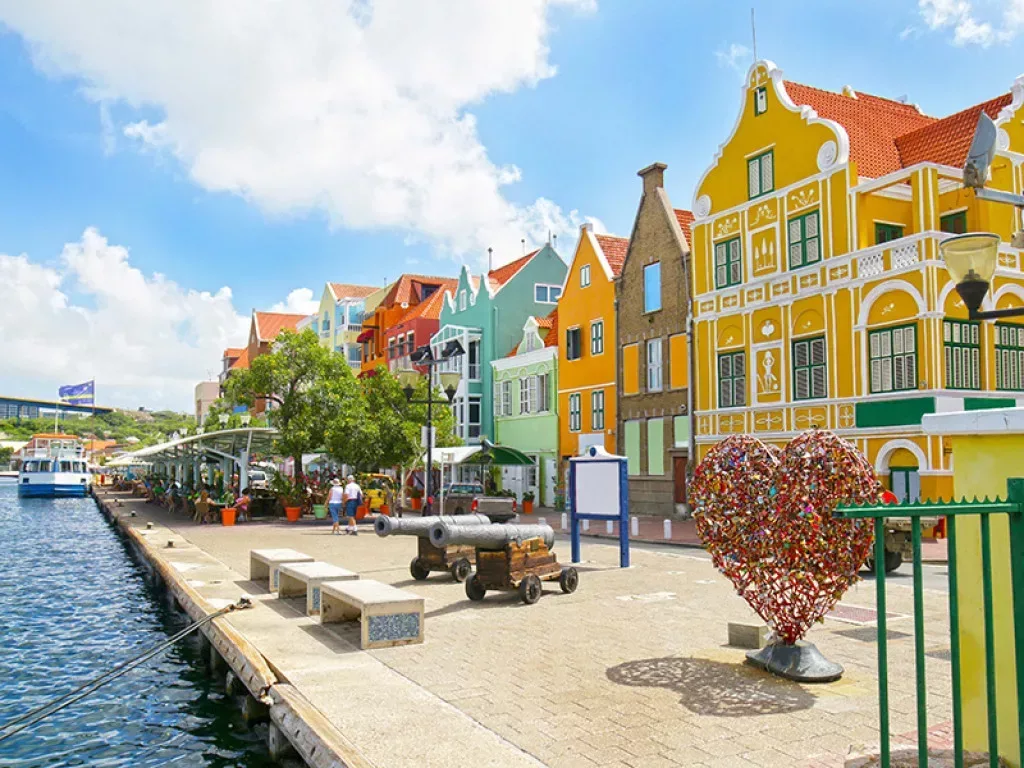The architecture in Willemstad reflects not only European urban planning concepts, but the styles of colonial towns with which the capital city engaged in trade.
An exceptionally well preserved example of a Dutch colonial trading settlement, Willemstad’s colourful building exteriors pop in a striking array of red, blue, yellow ochre and green, a local tradition dating back to 1817 when white lime finishes were prohibited.
Willemstad shares a common cultural history with its Caribbean counterparts, and is a rare instance of a historic port town uniquely set in a natural harbour, which continues to serve as the gateway to the city.
Four historic districts – Punda, Pietermaai, Otrobanda, and Scharloo – demonstrate the city’s subsequent stages of development over the course of centuries.
With a long and rich colonial history, Willemstad is a UNESCO World Heritage Site that accommodates more than 700 protected monuments, most of which are historic shops, townhouses and mansions. The majority of Curaçao’s listed buildings are also situated in the old districts of the capital, whilst many urban structures, such as the narrow alleys of Punda and Otrobanda, remain relatively intact.
These vibrant pedestrian-only streets create a picturesque atmosphere, adorned with myriad shops, cafés and terraces conveniently situated in one area. As one of the world’s most beautiful inner cities, walking in Willemstad will present you with perfect photo opportunities at every turn.
Punda’s quaint streets and alleys are alive with colour and brimming with life, leading to some of the island’s very best jewellery, electronics, cosmetics, clothing and souvenir stores.


